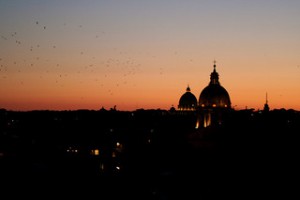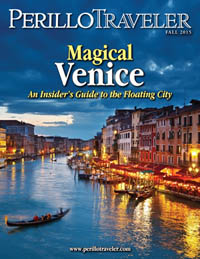 Before Rome was the modern center of Christianity, its religion consisted of rituals and practices introduced to the city from all over the Roman Empire and honoring various gods. Eventually, those pagan religions faded as Christianity rose, but one fascinating relic of pre-Christian worship has been renovated and opened to the public for the first time: a pagan basilica dedicated to Neopythagoreanism. Found on the outskirts of Rome near Porta Maggiore, one of the gates in the Aurelian walls, the basilica was built in the first century AD.
Before Rome was the modern center of Christianity, its religion consisted of rituals and practices introduced to the city from all over the Roman Empire and honoring various gods. Eventually, those pagan religions faded as Christianity rose, but one fascinating relic of pre-Christian worship has been renovated and opened to the public for the first time: a pagan basilica dedicated to Neopythagoreanism. Found on the outskirts of Rome near Porta Maggiore, one of the gates in the Aurelian walls, the basilica was built in the first century AD.
Similar to many Italian Christian churches – which its design probably inspired – the pagan basilica has three naves with six rock pillars and an apse. A statue of Medusa’s head greets visitors at the entrance, and the basilica’s walls and arched ceilings are decorated with landscapes; images of birds and mythical creatures such as cherubs, griffins, centaurs, and satyrs; and relief carvings of gods and goddesses (including Achilles, Orpheus, Paris and Hercules) and winged cherubs. A long corridor features walls with deep red faux wainscoting and frescoes, the paint still impressively holding up after 2,000 years.
The basilica was discovered accidentally in 1917 as a railroad from Rome to Cassino was being built. It lay 40 feet beneath more Roman ruins for nearly a century before it was dug out of soft volcanic tufa rock and restored over the last decade.
Members of the Neopythagorean cult believed in Pythagorean doctrines, which combined religious mysticism and Hellenic philosophy; the sect was founded in the first century BC and thrived in the first and second centuries AD. Likely built by the powerful Statilius family, it fell out of use when Titus Statilius Taurus, the family’s head, committed suicide in 53 AD after being accused of black magic by Emperor Nero’s mother Agrippina. Emperor Claudius – Agrippina’s husband – had the basilica sealed, and it was subsequently forgotten.
“There were lots of cults worshiped at the time and the empire was in general fairly tolerant towards them. But this one was seen as a threat because it discounted the idea of the emperor as a divine mediator between mortals and the gods,” Dr. Giovanna Bandini, the site director, told The Telegraph.
“This place is unique in the Roman world in terms of its architecture and design. It was a precursor to the basilicas built during the Christian era, centuries later.”
Though the restoration is still ongoing, guests can schedule guided tours at the location in Piazzale Labicano by visiting www.coopculture.it or calling (39) 06 39967700.
By Kathy McCabe
 Want to read more about travel? Get your free copy of our new digital magazine, Perillo Traveler!
Want to read more about travel? Get your free copy of our new digital magazine, Perillo Traveler!
